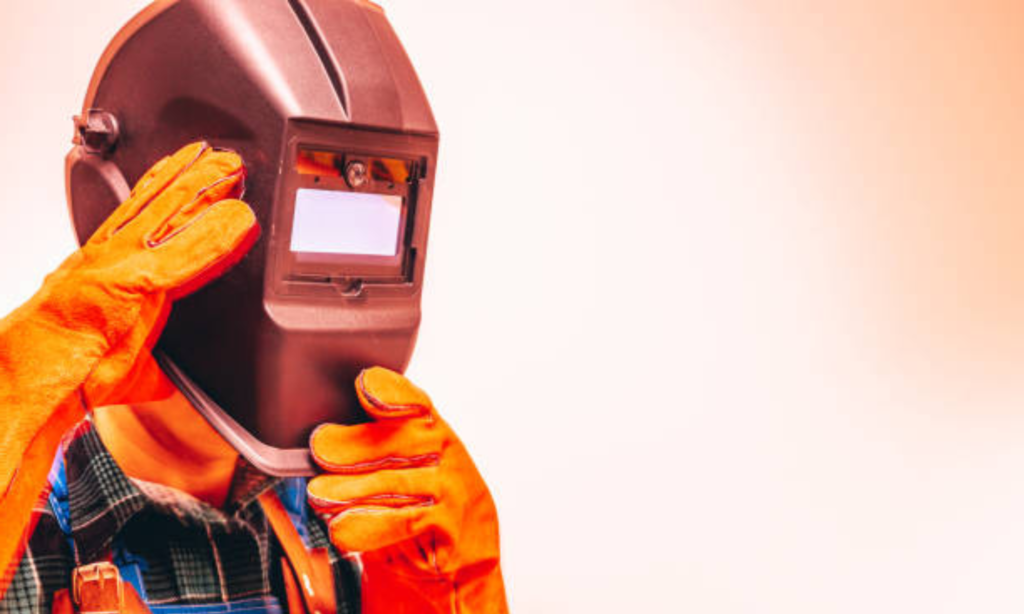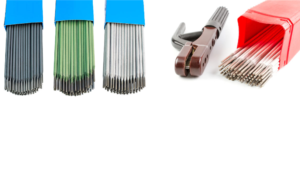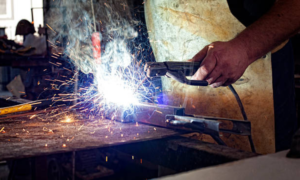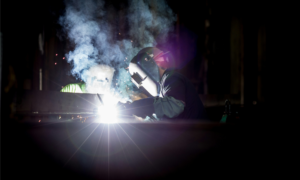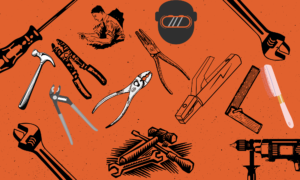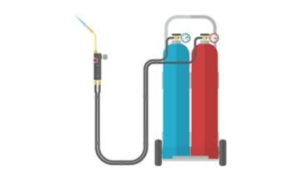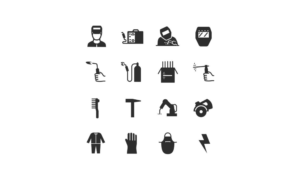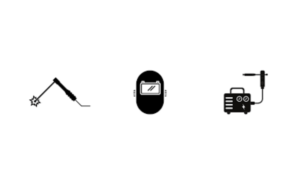Safety Equipment of Welding: Essential Gear for Welders
Welding safety equipment includes a helmet, gloves, apron, boots, and safety glasses for protection. Proper gear is essential to preventing injuries during the welding process.
Welders must always wear appropriate safety equipment to avoid burns, eye damage, and other hazards in the workplace. Safety gear not only protects the welder but also ensures a safe working environment for everyone involved. We will explore the different types of safety equipment used in welding and their importance in maintaining a secure workspace.
By understanding the significance of wearing proper safety gear, welders can reduce the risk of accidents and work more efficiently.
Types of Safety Equipment.
Safety equipment is crucial in welding to protect against hazards. Under Types of Safety Equipment, let’s look at essential gear such as protective clothing, eye protection, respiratory protection, hand protection, and foot protection.
Protective Clothing
Protective clothing shields the welder’s body from sparks and heat. It includes flame-resistant jackets and pants, gloves, and welding aprons.
Eye Protection
Eye protection is vital to prevent eye injuries from arc flashes and debris. Welders should wear safety glasses, welding helmets with auto-darkening filters, and face shields.
Respiratory Protection
Respiratory protection safeguards welders from fumes and gases. Respirators like N95 masks, powered air-purifying respirators (PAPRs), and supplied air respirators are commonly used.
Hand Protection
Hand protection is essential to prevent burns and cuts. Welders should wear leather gloves, welding gauntlets, and heat-resistant gloves.
Foot Protection
Foot protection is crucial to avoid injuries from falling objects or hot metal. Welders should wear steel-toed boots or welding spats for adequate foot protection.
Essential Features Of Safety Gear
The essential features of safety gear are crucial to ensuring the protection and well-being of welding professionals. Fire resistance, durability, comfort, and the right fit and sizing are key aspects that should be considered when selecting safety equipment for welding tasks. Let’s delve into each of these features in detail:
Fire Resistance
Fire resistance is of paramount importance when it comes to welding safety equipment. High temperatures, sparks, and flying debris are all potential hazards in welding environments. Safety gear such as welding jackets, aprons, and sleeves should be made from fire-resistant materials that can withstand intense heat without catching fire or melting. This protects the welder from burns and reduces the risk of fire accidents.
Durability
Durability is another essential feature to consider when choosing safety gear for welding. Welding tasks can be physically demanding and involve exposure to various hazards, including heat, sparks, and abrasions. Safety equipment that is designed to withstand such conditions and has excellent durability is essential to ensure long-lasting protection. Durable safety gear eliminates the need for frequent replacements, saving both time and money in the long run.
Comfort
Comfort is a crucial factor that should not be overlooked when selecting safety gear for welding. Welders often spend long hours working on intricate welding projects, and uncomfortable gear can hamper their productivity and overall well-being. Safety equipment should be designed with features like adjustable straps, breathable materials, and ergonomic designs to ensure optimum comfort. When welders feel comfortable in their safety gear, they can focus more on their work and perform at their best.
Fit And Sizing
The right fit and sizing play a vital role in the effectiveness of safety gear for welding. Ill-fitting equipment may restrict movement, impede visibility, or leave exposed areas vulnerable to hazards. Welding helmets, gloves, and protective clothing should be available in various sizes to cater to different body types. A well-fitting safety gear not only enhances protection but also allows welders to work with ease and maintain their agility.
Choosing The Right Equipment
When it comes to welding, choosing the right safety equipment is paramount for protecting welders from the inherent hazards of the job. The proper selection of safety gear not only ensures the well-being and comfort of the welder but also plays a crucial role in maintaining compliance with industry standards. Here’s a comprehensive guide to help you understand the key factors to consider when selecting welding safety equipment.
Assessment Of Hazards
The first step in choosing the right welding safety equipment is to conduct a thorough assessment of the hazards involved in the specific welding operation. This assessment should include identifying potential risks such as exposure to fumes, arc flashes, electrical shock, and flying debris. By understanding the nature of these hazards, you can select the appropriate protective gear to mitigate these risks effectively.
Compliance With Standards
When selecting welding safety equipment, it is crucial to ensure that the gear complies with industry standards and regulations. Welding safety standards are established to guarantee the highest level of protection for workers. Look for safety equipment that meets or exceeds the standards set by organizations such as the Occupational Safety and Health Administration (OSHA) and the American Welding Society (AWS).
Comfort And Flexibility
Aside from safety considerations, the comfort and flexibility of the welding safety equipment should also be taken into account. Welders often spend long hours wearing protective gear, so it’s essential to choose equipment that offers a balance between protection and comfort. Opt for gear that allows for freedom of movement and fits well to ensure that it doesn’t hinder the welder’s performance.
Maintenance And Care
Ensure proper maintenance and care of safety equipment for welding to enhance worker protection and prevent accidents. Regular inspection and timely repairs are crucial for optimal performance and safe working conditions. Prioritize safety by following manufacturer guidelines and regulations for equipment upkeep.
Maintenance and Care are essential aspects of ensuring that welding safety equipment operates effectively, minimizing the risks associated with the welding process. Regular inspections, cleaning procedures, and replacement guidelines are crucial for maintaining the integrity of safety equipment. Proper attention to maintaining and caring for welding safety equipment promotes a safe work environment and extends the lifespan of the equipment, ensuring its optimal performance.
Regular Inspections
Regular inspections of welding safety equipment are paramount to identify any wear and tear, damage or malfunctions. Inspections should be conducted weekly or before every use, consisting of visual checks for dents, cracks, or loose parts. In case of any irregularities, the equipment should be taken out of service for repair or replacement to prevent hazardous situations.
Cleaning Procedures
Unordered List: – Cleaning should be performed after every use to remove debris, dust, and other contaminants that could compromise the equipment’s functionality. – Use a damp cloth to wipe down equipment such as welding helmets, ensuring that no residue or particles obstruct the vision. – For protective gear, such as gloves and aprons, adhere to the manufacturer’s cleaning guidelines to maintain their protective properties.
Replacement Guidelines
When specific safety equipment exhibits signs of excessive wear, damage, or ineffectiveness, it should be promptly replaced to uphold safety standards. The following table provides a general reference for replacement intervals based on the equipment’s usage and condition:
| Equipment | Replacement Interval |
|---|---|
| Welding Helmet | Every 2-3 years or as recommended by the manufacturer |
| Protective Gloves | Every 6–12 months or as recommended by the manufacturer |
| Respirator Filters | Every 1–3 months, depending on usage and filter type |
By adhering to these maintenance and care practices, the integrity and functionality of welding safety equipment can be preserved, ensuring the safety of workers and the quality of the welding process. Regular inspections, proper cleaning, and timely replacement of equipment are vital for maintaining a secure welding environment.
Training And Education
Proper training and education are crucial when it comes to using safety equipment for welding. Without the proper knowledge and understanding, workers put themselves at risk for accidents and injuries. It is essential to provide comprehensive training programs that cover both the proper usage of safety equipment and emergency procedures.
Proper Usage Training
Proper usage training is the foundation for preventing accidents and ensuring worker safety. This training should cover the correct way to use various safety equipment used in welding, such as helmets, goggles, gloves, and protective clothing. Workers need to understand the importance of using each piece of equipment properly to protect themselves from hazards like sparks, radiation, and hot metal particles.
In these training programs, emphasis should be placed on the proper fit and adjustment of safety equipment. Workers must be educated on how to properly wear and secure their helmets and goggles, ensuring that they stay in place during welding activities. Additionally, training should include information on maintenance and inspection of safety equipment to ensure their effectiveness and longevity. Adequate training on proper usage also includes educating workers on the limitations of safety equipment.
They need to understand that while safety equipment provides protection, it does not eliminate all risks. Workers should be aware of the potential dangers that safety equipment may not guard against and take extra precautions to mitigate those risks.
Emergency Procedures Training
Emergencies can happen, even with the use of safety equipment. That is why training on emergency procedures is essential. Workers need to be equipped with the necessary knowledge and skills to handle a variety of emergency situations that may arise during welding activities.
Training programs should address various emergency scenarios such as fire outbreaks, electrical shocks, and chemical exposures. Workers must be familiar with the correct response procedures for each situation, including how to operate fire extinguishers, administer first aid, and evacuate the area safely. Regularly reinforcing and practicing emergency procedures is crucial to ensure that workers can respond quickly and effectively. Mock drills can be conducted to simulate emergency situations and assess workers’ preparedness.
By familiarizing themselves with the proper steps to take in emergencies, workers can respond swiftly, minimizing potential damages and injuries. In conclusion, proper training and education are vital for the safe usage of welding safety equipment. By providing comprehensive instruction on the proper usage of safety equipment and emergency procedures, workers can protect themselves and others from potential hazards and handle emergencies efficiently. Safety should always be the top priority in welding operations, and investing in training and education is a crucial step towards achieving this goal.
Common Mistakes In Safety Gear Usage
Enhancing safety in welding requires proper usage of safety equipment, but some common mistakes can lead to accidents. Overlooking proper fitting of protective gear, neglecting regular maintenance, and ignoring safety protocols pose risks. Avoiding these mistakes ensures effective protection for welders and minimizes workplace hazards.
Neglecting Eye Protection
Welders often forget eye protection, causing serious harm. Eye injuries are common and avoidable. Use proper welding helmets with shaded lenses. Don’t risk permanent eye damage.
Poor Maintenance Practices
Neglecting safety gear maintenance leads to failures. Regularly check and maintain equipment for safety. Welding masks, gloves, and shields must be cleaned and inspected regularly. Do not overlook these critical steps. Proper care of safety equipment ensures welding protection and long-term health.
Frequently Asked Questions Of Safety Equipment Of Welding
What Are The Essential Safety Equipment For Welding?
Welding requires protective gear such as welding helmets, gloves, and flame-resistant clothing to safeguard against sparks and fumes.
Why Is It Important To Use Safety Equipment During Welding?
Using safety equipment during welding is crucial to protect against burns, eye damage, and exposure to harmful fumes and gases, ensuring a safe working environment.
How Do Welding Helmets Contribute To Safety?
Welding helmets shield the eyes, face, and neck from sparks and intense light, while also providing protection from harmful ultraviolet and infrared radiation.
What Types of Gloves Are Suitable For Welding?
Welding gloves should be made of durable, flame-resistant materials such as leather or Kevlar to protect the hands from heat, sparks, and sharp objects.
Conclusion
To ensure the utmost safety in welding operations, investing in the right safety equipment is crucial. Welding helmets, safety goggles, gloves, and protective clothing act as barriers to protect the welder from sparks, debris, and harmful radiation. By prioritizing the use of appropriate safety gear, welders can minimize the risk of injuries and maintain a safe working environment.
Remember, safety should always be the top priority in any welding project.

